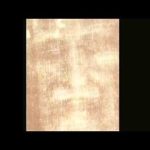Truth About Babylonian Anunnaki Necronomicon Bible with Joshua Free
Mardukite TV – Season 4 – Episode 2
The Babylonian Mardukite System:
Necronomicon – The Anunnaki Bible
with NABU, Joshua Free
Sponsored by: mardukite.com
A seeker coming into the program now has to make decisions concerning the depth that they wish to pursue and the order in which to do it. The first four manifestos produced by the Council of Nabu-Tutu, edited by Joshua Free and released by the Mardukite Truth Seeker Press are now found compiled in a single volume, as they have been since early 2010, known as the Necronomicon — Anunnaki Bible. This work contains Liber N, Liber L, Liber G and Liber 9 — listed in the order in which they were released. They build upon the knowledge and resources of the others as stand alone volumes, but were edited together to make a better reference as the Necronomicon — Anunnaki Bible. The “Mardukite Chamberlains” (now enjoying its third active year of operations) find that this particular work is the most critical to possess for anyone seeking to not only understand the Mardukite work — the work is just as priceless as a general compendium of ancient lore otherwise unparalleled.
The emphasis of the work found in the libros of the Necronomicon — Anunnaki Bible is specifically what is considered “Mardukite” from an Egypto-Babylonian perspective. The works reviewed are the more famous and most influential to come from Nabu’s priest-scribes in ancient post-Sumerian Babylon, where the tablets were forged to show the Anunnaki deity Marduk as supreme. The systematic development of the “manifold gate-system” and the scriptural process of “magick” that humans and priests came to know thereafter were forged into tablets — serving as the basis for the methodologies to later evolve across the planet, separated by time and geography.
A Sumerian background however, which certainly undermines the integrity of the later Babylonian beliefs concerning the divinity of the Anunnaki and sought to conceal its Sumerian origins, is kept absent from the libros of the Necronomicon — Anunnaki Bible, which were reconstructed in the manner by which they were famously used by the “Mardukites” of Babylon (and even Egypt, where Marduk was known as “Ra”). The Babylonian Mardukite methodology is shown in self-honesty from its own perspective in the Necronomicon — Anunnaki Bible, being the tablets created by the Nabu-priests and scribes that served the line of Enki and Marduk in the southern half of Mesopotamia. Although the specifically Babylonian Mardukite tradition is neither the beginning or end of the story — it is the primary turning point between the Sumerian and post-Babylonian traditions, customs, cultural beliefs and spiritual worldviews. As such, to gain clarity to the hows and whys, the Seeker begins with this system — the archetype of all worldly systems — Babylon.
Leave A Reply
You must be logged in to post a comment.









 Paranormal
Paranormal

